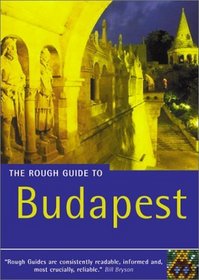Search -
The Rough Guide to Budapest
The Rough Guide to Budapest
Author:
INTRODUCTION With its wonderful natural setting, straddling the River Danube, its beautiful architecture and excellent Magyar cuisine, Budapest is one of the most satisfying cities in Europe to visit. Its magnificent waterfront and boulevards invite comparisons with Paris, Prague and Vienna – as do many features of its cultural life such a... more »
Author:
INTRODUCTION With its wonderful natural setting, straddling the River Danube, its beautiful architecture and excellent Magyar cuisine, Budapest is one of the most satisfying cities in Europe to visit. Its magnificent waterfront and boulevards invite comparisons with Paris, Prague and Vienna – as do many features of its cultural life such a... more »
ISBN-13: 9781858288895
ISBN-10: 1858288894
Publication Date: 9/2002
Pages: 304
Rating: ?
ISBN-10: 1858288894
Publication Date: 9/2002
Pages: 304
Rating: ?
0 stars, based on 0 rating
Publisher: Rough Guides Limited
Book Type: Paperback
Members Wishing: 0
Reviews: Amazon | Write a Review
Book Type: Paperback
Members Wishing: 0
Reviews: Amazon | Write a Review
Genres:




